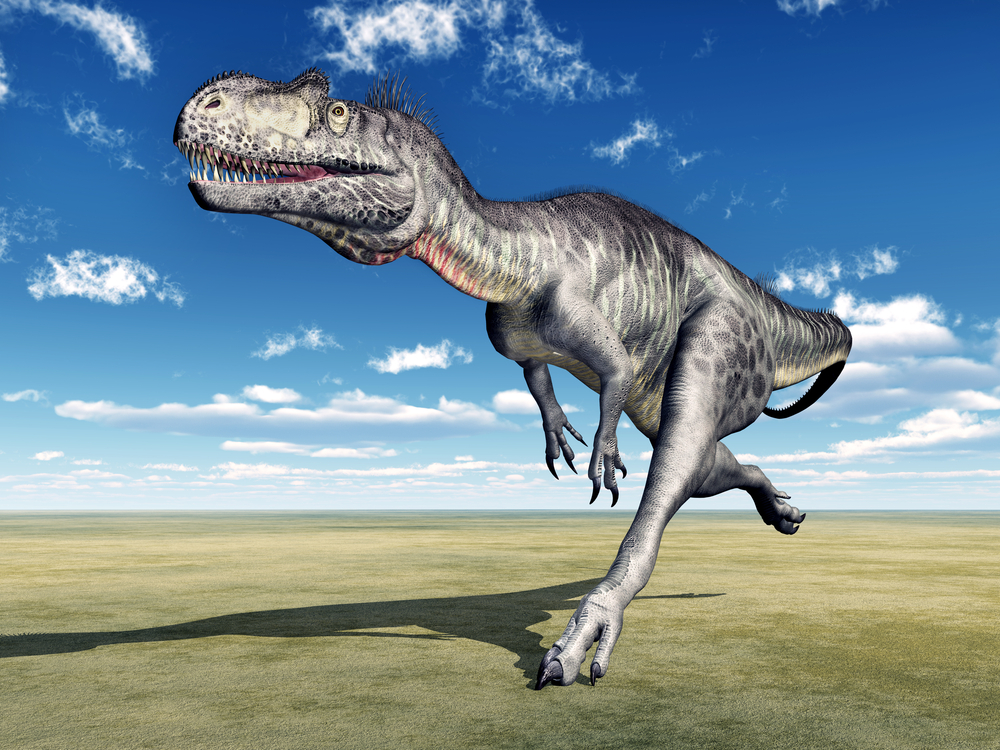4 Megalosaurus Fossils Discovered Throughout Time
Posted on Categories Discover Magazine

Though hardly a household name like Velociraptor or Tyrannosaurus rex, Megalosaurus holds a key place in the history of paleontology. That’s not because it’s an exceptional dinosaur but as it was the first dinosaur discovered, even before the term dinosaur was ever coined.
For that reason, it is “phenomenally important,” according to Emma Nicholls, Collections Manager of Vertebrate Palaeontology at Oxford University’s Museum of Natural History.
What we Know About the Megalosaurus
Megalosaurus is known to have roamed what is now the United Kingdom in the Mid Jurassic, between 168 million years to 165 million years ago. A meat-eating theropod, it stretched between about 20 and 30 feet in length. Based on early fossil discoveries it was once thought to be as long as 65 feet. But it’s actually on the lower end of the large theropods that roamed the later Cretaceous period. It was probably a “bipedal, agile hunter,” says Nicholls.
“Though the animal itself doesn’t tell us anything fundamentally radical in terms of science, it’s hugely important from a historical point of view,” says Nicholls. “It was named at a time when the word dinosaur didn’t exist.”
Back in the 19th century it was one of three animals upon which the now famous group Dinosauria was founded, she adds. Several fossil discoveries tell the tale of the Megalosaurus and how its importance has evolved through time.
Read More: As Meat-Eating Hunters With Strong Jaws, Theropods Ruled the Mesozoic
1. 1676s: A Mystery Fossil
The first discovery of Megalosaurus stretches back to 1676 when workers recovered a fossil from Stonesfield quarry, a crucial site in the story of Megalosaurus. This fossil made its way into the hands of Robert Plot, who worked at Oxford University. Due to the fossil’s similarities to a certain part of the human anatomy, a scientist, Richard Brookes, named it Scrotum Humanum shortly after its discovery.
Based on where it was found, it is believed that the fossil Plot described may have belonged to Megalosaurus as a host of other fossils emerged around the same site much later on. Unfortunately, no one knows where that fossil is now, says Nicholls, so there is no way of verifying that.
In his day, however, Plot had his own theories. He first posited that it may have belonged to an elephant brought to England by the Romans but ultimately proposed it was an enormous bone of truly gigantic “men or women” from Biblical times. As humorous as this may sound today, such beliefs regarding the origins of fossils in Plot’s day were quite common.
2. 1824: The First Dinosaur
Richard Owen famously coined the term dinosaur in 1842, describing a long extinct group of “terrible lizards.” But not long before, William Buckland, a reader in geology at Oxford University at the time, examined a group of 15 fossils recovered from various sites, including the Stonesfield quarry. They included a large femur, a jawbone complete with some teeth, and vertebrae, says Nicholls.
Examining these fossils and working with naturalist Mary Morland and the French anatomist and zoologist Georges Cuvier, Buckland eventually described them as belonging to a species he dubbed Megalosaurus, or “great lizard,” in 1824.
A few years later came descriptions of Iguanodon and Hylaeosaurus, based on other fossils found in England. Owen would eventually use all three in his description of the now widely known dinosauria group.
3. The Jawbone Discovery
Among the 15 fossils used by Buckland to describe Megalosaurus, the jawbone is perhaps the most important, says Nicholls. That’s primarily due to some technical aspects of paleontological taxonomy. Originally those 15 fossils made up the type specimens from which Megalosaurus was first described.
But since then, researchers have tried to clean up the rather messy approach taken back then. “That’s not how you would do science today,” Nicholls says. “You have to have one specimen, not a group of specimens, because it just breaks the system.”
So today, scientists now use the features of the jawbone to distinguish Megalosaurus from other dinosaurs. That’s known as the lectotype because it was selected from amongst the already described fossil material. The other fossils from the original discovery are referred to as the paralectotype. In short, the jawbone holds the key to identifying this particular species.
4. A Dinosaur Highway
Since its description, the discovery of other fossils – such as an arm, leg, and bits and pieces of cranial material – have allowed scientists to round out a picture of what Megalosaurus likely looked liked, coupled with learnings from other similar and more complete dinosaur skeletons.
Yet, a startling discovery announced earlier this year reveals a fascinating and momentary glimpse of this dinosaur on the move. Unearthed by sheer chance at a quarry, researchers, including Nicholls, revealed a series of footprints – or trackways – of herbivores and carnivores, including Megalosaurus.
It offers a rare hint into the life of this species, showing that it lived in close proximity to species such as Cetiosaurus and Diplodocus, herbivores far larger than Megalosaurus itself.
“It’s really amazing to be co-leading an excavation of dinosaur trackways at any time, but to do it in the 200th anniversary of Megalosaurus’ discovery was really exciting,” Nicholls says.
Article Sources
Our writers at Discovermagazine.com use peer-reviewed studies and high-quality sources for our articles, and our editors review for scientific accuracy and editorial standards. Review the sources used below for this article:
Sean Mowbray is a freelance writer based in Scotland. He covers the environment, archaeology, and general science topics. His work has also appeared in outlets such as Mongabay, New Scientist, Hakai Magazine, Ancient History Magazine, and others.